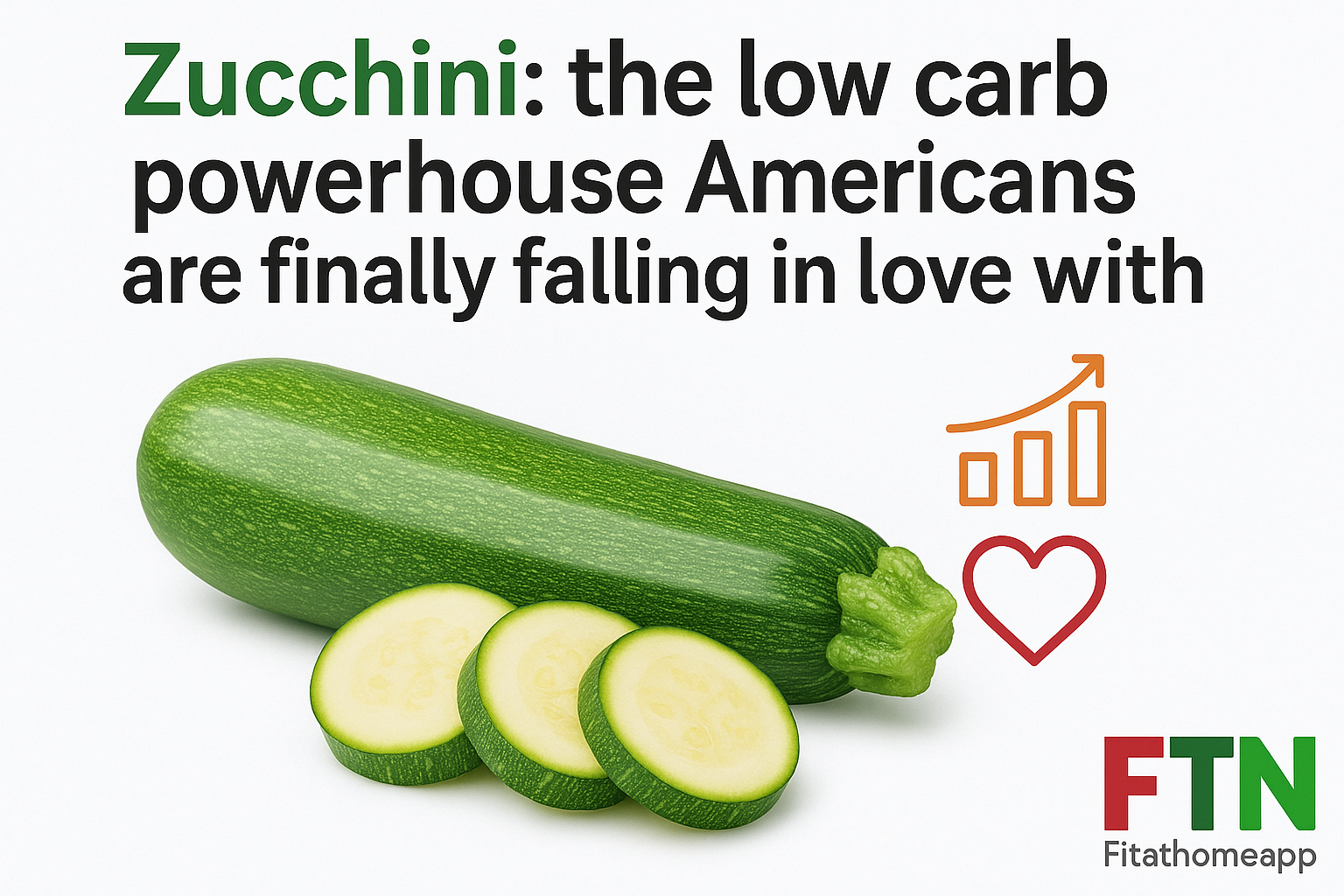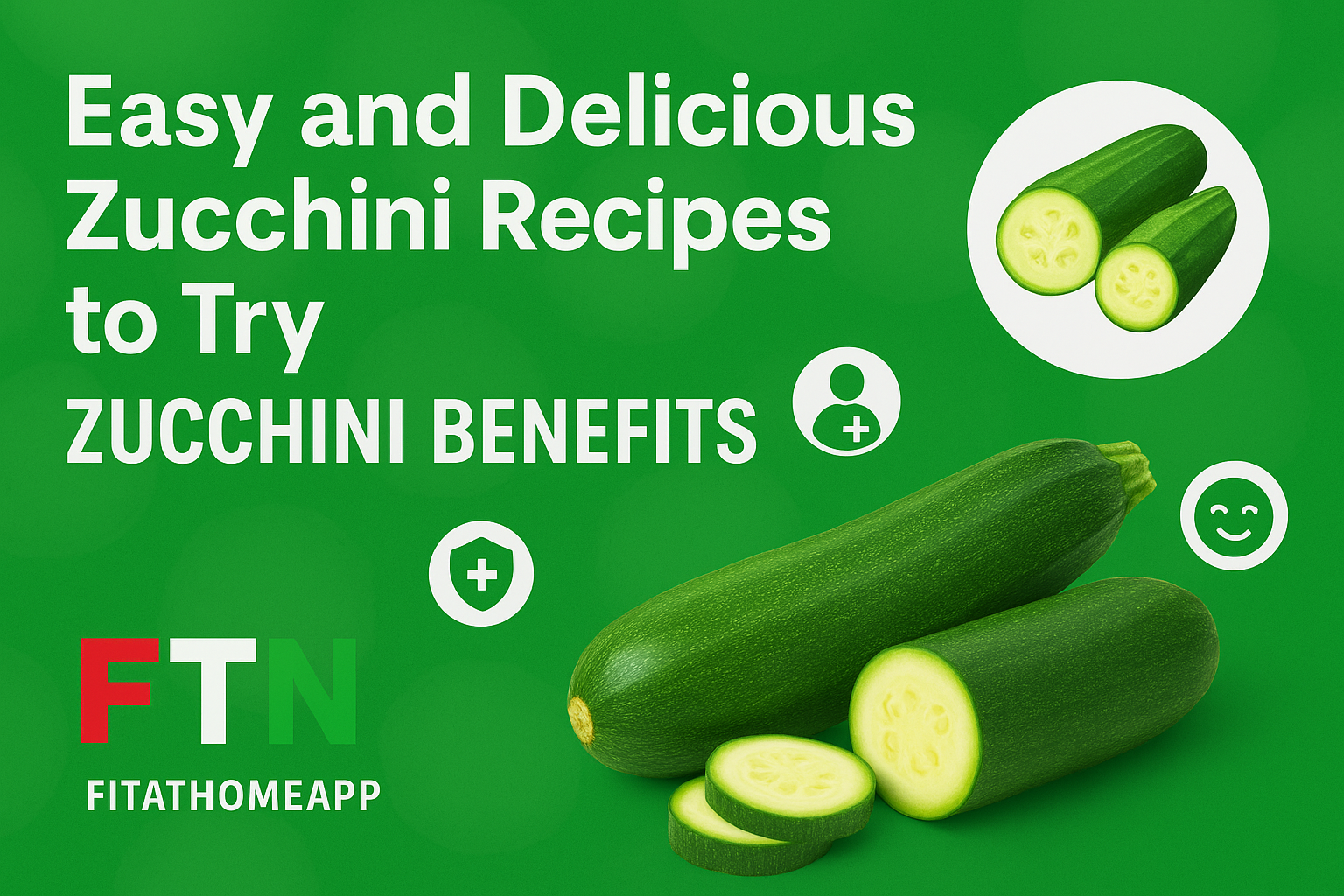Introduction
Zucchini benefits are gaining attention as more people discover just how nutritious and versatile this green vegetable can be. Also known as courgette, zucchini is no longer just a side dish or salad filler—it’s becoming a staple in healthy eating. With its light, refreshing taste and impressive nutritional profile, this humble vegetable is transforming how many Americans approach meals.
Originally cultivated in Central America and later refined in Italy, zucchini has earned its place in modern kitchens as a go-to ingredient for low-carb, plant-based, and whole-food diets. Whether you’re cutting carbs, managing your weight, or simply looking to eat more vegetables, exploring the many zucchini benefits is a smart step toward better health.
Packed with Nutrients, Light on Calories
One of zucchini’s biggest advantages is its nutritional value. With just 17 calories per 100 grams, it’s a guilt-free option for anyone counting calories or watching their portion sizes. But don’t let the low calorie count fool you—zucchini is packed with important nutrients.
It provides a solid dose of:
Vitamin C – to boost immune health and skin vitality.
Vitamin A – essential for vision and cellular repair.
Potassium – which supports heart health and muscle function.
Magnesium – involved in hundreds of bodily functions, including energy and metabolism.
Fiber – which aids digestion, promotes fullness, and supports blood sugar control.
In addition, zucchini is rich in antioxidants that protect the body from oxidative stress and inflammation, which are linked to chronic diseases such as heart disease and diabetes.
Zucchini and Low-Carb Living: A Perfect Match
As low-carb diets like keto, paleo, and Whole30 continue to grow in popularity, zucchini has become a favorite ingredient for health-conscious individuals. Its mild flavor and tender texture make it an excellent substitute for traditional carbohydrates.
A medium zucchini contains only around 6 grams of carbohydrates—dramatically lower than a cup of cooked pasta (which has over 40 grams). That’s why zucchini noodles (a.k.a. “zoodles”) have become a staple for those looking to cut back on carbs without sacrificing taste or satisfaction.
Zucchini’s low glycemic index also helps maintain steady blood sugar levels, which is especially beneficial for people with diabetes or insulin resistance.
Versatile in the Kitchen
Zucchini isn’t just healthy—it’s delicious and adaptable. It can be:
Spiralized into noodles as a pasta alternative.
Grilled with olive oil and herbs for a smoky side dish.
Stuffed with meat, cheese, or grains for a hearty low-carb meal.
Baked into zucchini fries or crispy chips.
Grated into baked goods like muffins or brownies to add moisture and nutrients.
You can eat it raw, roasted, steamed, stir-fried, or blended into soups. Zucchini absorbs the flavors of any spices or sauces you pair it with, making it an easy addition to nearly any cuisine—from Italian to Mediterranean to Asian-inspired dishes.
Zucchini’s Popularity in American Homes
Zucchini has become a household favorite in recent years, not just among nutritionists and chefs, but also with everyday families trying to eat better. Social media has played a major role in popularizing zucchini-based dishes, with recipe creators and food bloggers frequently sharing creative ways to use it.
From TikTok tutorials on zoodle recipes to Instagram-worthy zucchini lasagna, it’s clear that people are enjoying the flexibility and health benefits of this underrated vegetable. According to food trend reports, zucchini is now one of the top 10 most searched vegetables in the U.S.—a sign of its growing appeal.
How to Grow Zucchini at Home
If you’re into gardening or simply want fresher produce, zucchini is one of the easiest vegetables to grow at home. It thrives in warm weather, requires minimal care, and produces a generous harvest. With enough sunlight, compost-rich soil, and regular watering, a single plant can yield dozens of zucchinis throughout the summer.
Homegrown zucchini not only tastes better—it’s also more sustainable and affordable than store-bought produce. Plus, it gives you more control over pesticides and growing methods, supporting a cleaner, eco-friendlier lifestyle.
Common Challenges (And Easy Fixes)
Zucchini does have a high water content, which can sometimes lead to soggy dishes. To prevent this, lightly salt sliced zucchini and let it sit for 20–30 minutes before cooking. Then, blot away the moisture with paper towels. This trick works especially well for baking or grilling.
Flavor-wise, zucchini is mild on its own, so don’t be afraid to add spices, herbs, garlic, or cheese. It pairs beautifully with bold ingredients and savory sauces.
Here are a few simple ways to enjoy zucchini today:
Zucchini Fritters: Grated zucchini, egg, and almond flour pan-fried into crispy patties.
Zoodle Stir-Fry: Spiralized zucchini sautéed with bell peppers, garlic, and chicken or shrimp.
Zucchini Boats: Halved zucchinis filled with tomato sauce, cheese, and herbs.
Chocolate Zucchini Brownies: Moist, rich dessert with added fiber and nutrients.
Baked Zucchini Chips: Thin slices seasoned and roasted until golden and crisp.
Each of these recipes proves that healthy food can be full of flavor—and fun to make.
Final Thoughts: Why Zucchini Deserves a Spot on Your Plate
Zucchini is more than a trendy vegetable—it’s a powerhouse of nutrients, an ally for low-carb eating, and a blank canvas for endless culinary creativity. Whether you’re trying to manage your weight, improve your diet, or just enjoy fresh, seasonal food, zucchini offers something for everyone.
With its ease of preparation, versatility in the kitchen, and growing popularity across the U.S., zucchini is here to stay. It’s time to embrace this green gem—not just as a health food, but as a flavorful, feel-good addition to your everyday meals.
Personal Take on the Video
This video, “What Are The Health Benefits of Zucchini | 4 Easy Recipes…”, offers both nutritional insight and practical recipes—showcasing how zucchini supports weight management, improves digestion, and can be seamlessly incorporated into everyday meals. It’s an effective match for your focus on zucchini’s health-friendly, low-carb versatility.
Rich Nutrient Profile with Very Low Calories
Zucchini provides only ~17–27 calories per 100g or cooked cup and delivers valuable nutrients including vitamins A, C, potassium, magnesium, fiber, and antioxidants.
Supports Heart, Eye & Digestive Health
Carotenoids like lutein and zeaxanthin support eye health, while fiber, potassium, and vitamin K bolster heart function and digestion.
Hydrating and Low-Carb Friendly
Thanks to its high water and fiber content, zucchini helps regulate blood sugar and promotes satiety, making it ideal for low-carb and weight-conscious diets.
🥒 ?Zucchini vs. Cucumber: What’s the Difference
While zucchini and cucumber may look similar at first glance, they differ significantly in texture, taste, nutritional value, and culinary use. Here’s a side-by-side comparison to help you understand which one is right for your plate—and why zucchini benefits might surprise you.
| Feature | Zucchini | Cucumber |
|---|---|---|
| Appearance & Texture | Dark green skin, smooth texture, becomes soft when cooked | Light to dark green, slightly waxy skin, crisp and watery when raw |
| Taste | Mild, slightly sweet, absorbs flavors well | Cool, refreshing, slightly bitter in some varieties |
| Zucchini Benefits | Low in carbs, high in fiber and vitamin C, supports digestion, weight loss, and blood sugar control. Great for low-carb and plant-based diets. | Hydrating, high in water content, contains antioxidants (like cucurbitacins), supports skin health and detoxification |
| Best Used For | Cooking: grilling, sautéing, roasting, stuffing, spiralizing into “zoodles” | Raw: salads, smoothies, sandwiches, infused water |
| Nutritional Role | A versatile, low-carb substitute for pasta or potatoes in healthy recipes | A hydrating snack or salad ingredient, perfect for summer detox plans |
| Peak Season | Summer | Summer |
| Calories (per 100g) | ~17 calories | ~16 calories |
✅ Which One Should You Choose?
- Choose zucchini if you’re following a low-carb, keto, or whole-food diet and need a nutrient-rich, cookable veggie.
- Choose cucumber for hydration, light snacking, and refreshing raw dishes.
Both are healthy in their own ways, but if you’re looking to maximize nutrition while cutting carbs, the zucchini benefits are hard to beat.
🧐 Frequently Asked Questions About Zucchini
Q: Is zucchini actually healthy or just a trendy veggie
A: Zucchini isn’t just hype—it’s genuinely packed with benefits. It’s low in calories and carbs, rich in fiber, vitamin C, and antioxidants. From supporting digestion to helping with weight management, zucchini benefits go beyond the basics.
Q: Can I eat zucchini raw, or does it have to be cooked
A: Yes, you can absolutely eat it raw! Sliced zucchini makes a great crunchy snack or salad topper. But cooking brings out its sweet, mild flavor—especially when grilled or roasted.
Q: What makes zucchini better than other veggies in low-carb diets
A: Unlike starchy vegetables, zucchini is super low in net carbs, making it ideal for keto or low-carb lifestyles. Plus, it’s so versatile—you can spiralize it into noodles, stuff it, bake it, or even use it in desserts!
Q: Does zucchini help with weight loss
A: Definitely! Thanks to its high water content, fiber, and low calorie count, zucchini keeps you full longer without the extra calories—making it a smart choice for weight-conscious eaters.



[…] zucchini when you’re cooking healthy meals and need a low-carb, nutrient-rich base that adapts to […]